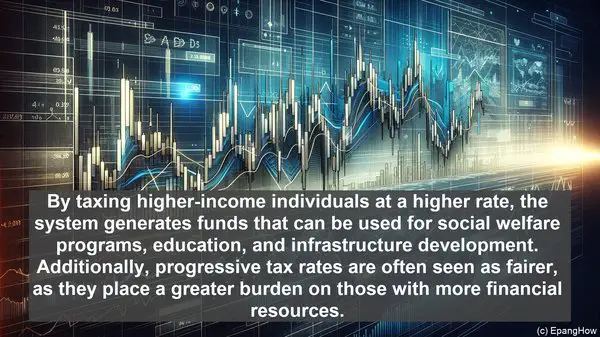Introduction: The Role of Taxation
Hello everyone! Taxation is a crucial aspect of any economy, serving as a means to fund public services and redistribute wealth. Today, we’ll delve into the two primary tax systems: progressive and flat tax rates. While both serve the purpose of revenue generation, they differ significantly in their approach and implications.
Defining Progressive Tax Rates
Progressive tax rates, as the name suggests, progress or increase as an individual’s income rises. In this system, higher-income earners are subject to higher tax rates, while those with lower incomes face lower rates. The underlying principle is that those who earn more have a greater ability to contribute to the state’s revenue pool.

Understanding the Marginal Tax Rate
A key element of progressive tax rates is the concept of the marginal tax rate. This refers to the tax rate applied to the last dollar earned. For instance, in a system with a 30% marginal tax rate, an individual earning an additional $1,000 would owe $300 in taxes. It’s important to note that the marginal tax rate doesn’t apply to all of an individual’s income, only to the portion that falls within a specific income bracket.
The Progressive Tax Rate Structure
Progressive tax systems typically consist of multiple tax brackets, each with its own rate. For example, the first bracket might have a rate of 10%, while the next one could be 20%. This tiered structure ensures that individuals are taxed proportionately to their income level. It’s worth mentioning that even within a progressive system, certain deductions and credits can reduce an individual’s overall tax liability.

Advantages of Progressive Tax Rates
Progressive tax rates have several advantages. Firstly, they promote income redistribution, aiming to reduce wealth disparities. By taxing higher-income individuals at a higher rate, the system generates funds that can be used for social welfare programs, education, and infrastructure development. Additionally, progressive tax rates are often seen as fairer, as they place a greater burden on those with more financial resources.
Examining Flat Tax Rates
In contrast to progressive tax rates, flat tax rates apply a uniform tax rate to all individuals, regardless of their income level. For example, if the flat tax rate is set at 15%, both a low-income earner and a high-income earner would owe 15% of their income in taxes. This system is often characterized by its simplicity and ease of implementation.
Simplicity vs. Equity: The Flat Tax Debate
Proponents of flat tax rates argue that they offer a more straightforward and transparent tax system. With a single rate, calculations are simplified, reducing the need for complex tax forms. However, critics contend that flat tax rates can be regressive, disproportionately burdening low-income individuals. For someone with a modest income, a 15% tax rate may have a more significant impact on their financial well-being than on a high-income earner.
Economic Implications: Growth vs. Redistribution
The choice between progressive and flat tax rates also has economic implications. Advocates of flat tax rates often argue that they encourage economic growth and investment. By allowing individuals to keep a larger portion of their income, it’s believed that they’ll have more resources available for consumption and investment, ultimately stimulating the economy. On the other hand, progressive tax rates prioritize income redistribution, aiming to reduce income inequalities.
